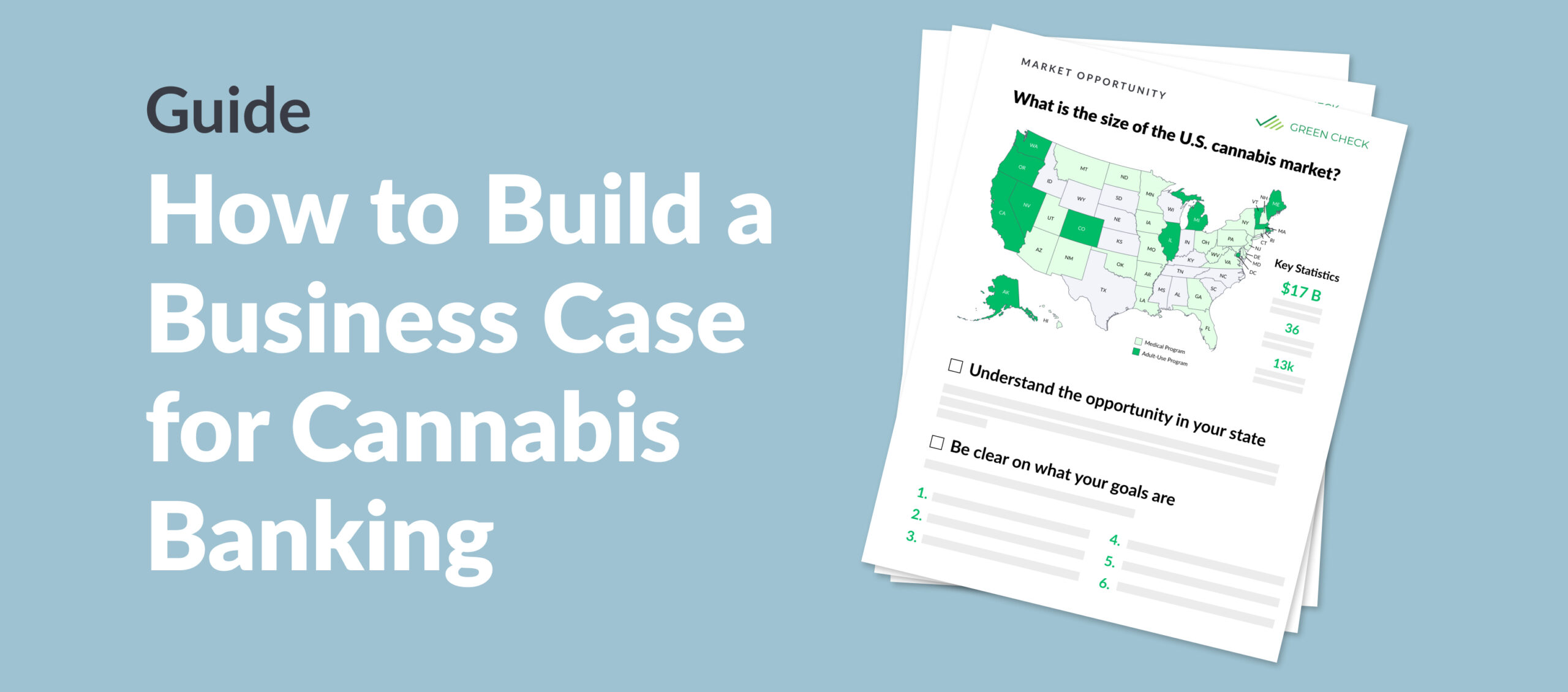Getting Your Board on Board: Educate

This is the first part of a four-part series on how to educate your Board and other teams, articulate your plan, structure your program, and then implement (launch) the line of business.
As we talk with executives around the country, a common lament is that the financial institution’s Board of Directors are reluctant to accept the risks of cannabis banking. The overarching dilemma of federal prohibition seems insurmountable at first: accepting deposits from a cannabis-related business (CRB) engaged in (still federally) illegal activity is, technically speaking, an illegal activity in its own right. Even when an institution operates under a state-issued charter, its participation in federal deposit or share insurance programs can aggravate the apprehension at taking on this line of business. Those who have cleared this hurdle tell us they’ve done so by building a business case that their Board found compelling and irresistible.

Leaders who have been there also tell us that developing a successful business case requires more than a spreadsheet, and more than the usual dollars-and-cents recap or cost-benefit analysis. In the early days of our company’s launch, we wrote and spoke extensively on the clear economic arguments in favor of cannabis banking. (During this time, we were stunned to learn just how many Boards are unpersuaded by mere appeals to profit motive!) But we soon realized that the typical Board member had little to no exposure to CRBs. This limited perspective leads some board members to envision a worst-case scenario where, with little or no warning, “the Feds” descend on the institution, shut it down, haul the Board and officers off in handcuffs, and those individuals face criminal charges and have their personal assets seized. While it’s legally true that such a nightmare scenario “could” happen in theory, history shows that it has never occurred in any of the 24 years since California first legalized the use of medical marijuana.
Which leads to our next observation: The institutions who have successful cannabis banking programs applied a common four-step “EASI” process to get there.
- Educate
- Articulate
- Structure
- Implement
You’ve got to educate your Board and other teams, articulate your plan, structure your program, and then implement (launch) the line of business. In this entry, we focus on the Educate element, and we’ll cover the other steps in later posts. A strong education campaign can remove fear, uncertainty and doubt in the decision to bank CRBs.
Eliminate Fear
Leaders of cannabis banks and credit unions all shared that they engaged in a campaign of heavy, up-front education on how CRBs operate. Some took a traditional approach, with presentations, charts, graphs and data. Others took those elements one step further, and invited CRB owners to the FI to participate in these discussions. Those who had the greatest success did both of these things, and added one more layer: “field trips” for the Board to visit local CRBs and observe their operations. Board members who participated in these approaches tell us that the onsite visits were the most impactful part of the awareness campaign. The visits debunked the stereotype (or for some, the memory) of the “head shop” that sells everything from smoking devices to black light posters. Field trippers reported that their firsthand observations of how CRBs conduct business removed some of their misconceptions and provided valuable insight to the similarities between these businesses and other types of retail establishments.
Remove Uncertainty
The uncertainties of cannabis banking center around the risks. Not only what is legal or not legal, but also which other risks in addition to legal ones will the institution face. Painting a clear picture of where these risks lie is essential. Elimination of uncertainties on the legal side are largely surmountable through reliance on the many types of Federal and State-level guidance documents – like this job aid from the Conference of State Banking Supervisors – that have been prepared on the subject. An even better way to remove these question marks is by working with a trusted advisor who has already done the research and homework for institutions like yours, giving you an “at-your-fingertips” resource that already knows the boundaries and frameworks in place in the state(s) where you operate.
A great starting point to identify the ‘other-than-legality’ types of risks is to compare the known with the unknown. For example, the risks incumbent with processing large cash deposits are the same whether the cash is coming from a CRB or a local independent grocer. The risks of identifying the company’s beneficial owners must be addressed whether the company is a real estate management firm or a CRB. When you can separate the fact that cannabis is the product being sold from the fundamentals of how the business operates, you can focus on risk reduction in a practical and pragmatic way, and you’re certain to find many areas in which you already know how to bank these types of businesses.
Regardless of how you choose to present this data to your Board, they’ll want solid and defensible answers to questions like how to get started, how to reduce risk to the extent possible, what type of up-front investment will need to be committed, and when financial returns will start to be visible. That’s where the ‘traditional’ type of business case presentation comes into the picture. Focusing on legality is a foregone conclusion; it’s how you make the case for moving forward in the absence of Federal legality that moves the needle. You and your Board already know the legality parameters, and reiterating those facts in the hopes of inspiring the risk-averse does little to persuade. Leaders who’ve tackled this problem advise that it’s how you’ve assessed those risks, and how you plan to manage the line of business that has provided the needed inspiration for Boards to make the “go” decision on cannabis banking.
Banish Doubt
At some point, all the facts have been gathered and assembled. All the data is known, and even the “unknown unknowns” have been accounted for as best you can. The time for “paralysis by analysis” has come and gone. A decision is required. How does that decision fall in favor of banking CRBs? For most institutions, it has come down to feeling confident and secure in their understanding of the risks, combined with their ability to quickly identify and respond to emerging risks that can arise during the relationship. Strong ongoing oversight, happening as often as daily at the point of transactions, has been the program feature offering the greatest impetus toward adoption. Programs at the best-run institutions are a combination of human expertise and computerized efficiency. Your Board’s confidence that risk can be appropriately identified, measured periodically, monitored at an appropriate frequency, and controlled to acceptable levels, is what triggers the adoption mindset.
Getting your Board on board with cannabis banking requires much more than producing a narrative with supporting financials. It’s a new line of business, with new risks that can produce new rewards. Helping your Board understand both the risk AND reward scenarios, in realistic and achievable frameworks can help your institution thrive.
If you’d like to learn more about how to build YOUR institution’s business case for cannabis banking, download our guide for building a business case here.